
Strategies for Revealing New Automotive Technologies
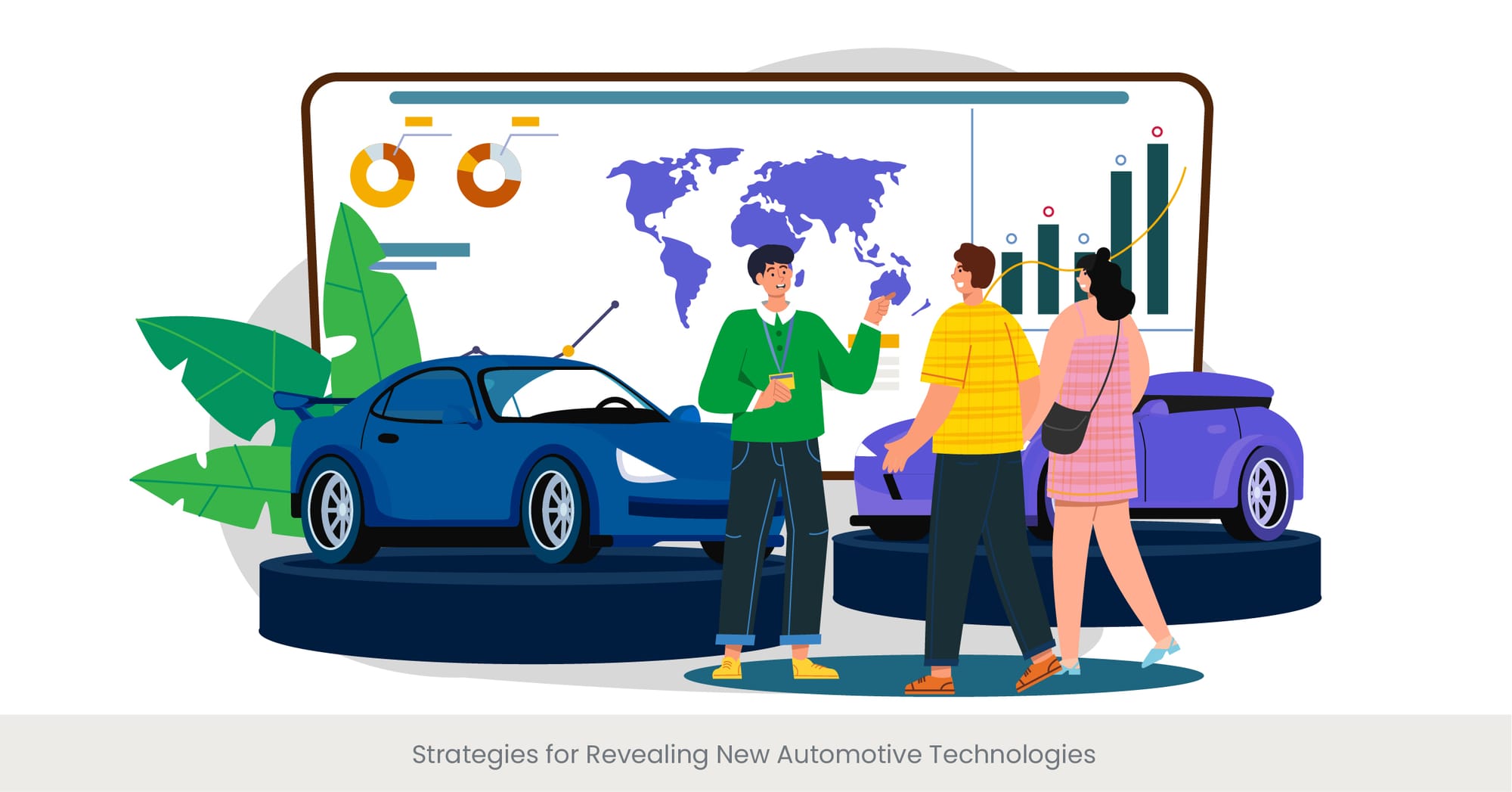
Introduction to Strategic Reveals
In the fast-evolving automotive landscape, the unveiling of new technologies plays a pivotal role in a company's success. A well-crafted car launch presentation not only captivates the audience but also sets the stage for the market's reception of the innovation. The focus here is on creating a memorable event highlighting new cars' groundbreaking features, whether they are luxury car launches, electric vehicle presentations, or budget car introductions. The essence of these strategies lies in their ability to bridge the gap between advanced automotive developments and consumer anticipation, fostering a connection beyond the initial reveal.
Background and Importance
Historically, automotive reveals were confined to auto shows and press releases. However, the landscape has shifted towards more immersive and engaging formats. From the world premiere of a sedan launch keynote to the intricate planning behind an SUV launch audio-visual content, the approach to unveiling new automotive technologies has significantly transformed. This evolution reflects a broader industry trend toward prioritizing customer engagement and leveraging digital platforms for a wider reach. Understanding the historical context and the current shift towards more dynamic presentation formats is key to appreciating the strategies employed by leading automakers.
Real-World Applications and Trends
A notable example of a successful automotive technology reveal is the BMW electric vehicle launch keynote, which seamlessly integrated multimedia content to showcase the car's innovative features and sustainability efforts. Similarly, Toyota's approach to introducing its hybrid vehicles through live demonstrations and virtual reality experiences has set a new benchmark for engaging stakeholders. These case studies exemplify how companies are moving beyond traditional presentations to create experiences that resonate with their audience, emphasizing the car's features, design, and technological advancements in a compelling narrative.
Supporting Data and References
Research and industry reports highlight the effectiveness of these innovative presentation strategies. For instance, studies have shown that engaging multimedia content can increase audience retention rates by up to 50%, underscoring the value of incorporating audio-visual elements into car launch events. Furthermore, feedback from live demonstrations and test drives often yields insights into customer preferences, guiding future innovations and marketing strategies. References from automotive and marketing experts further validate the approach, with statistics indicating a direct correlation between the quality of the launch presentation and the subsequent market performance of the new vehicle.
Designing Presentations for Automotive Launch Events
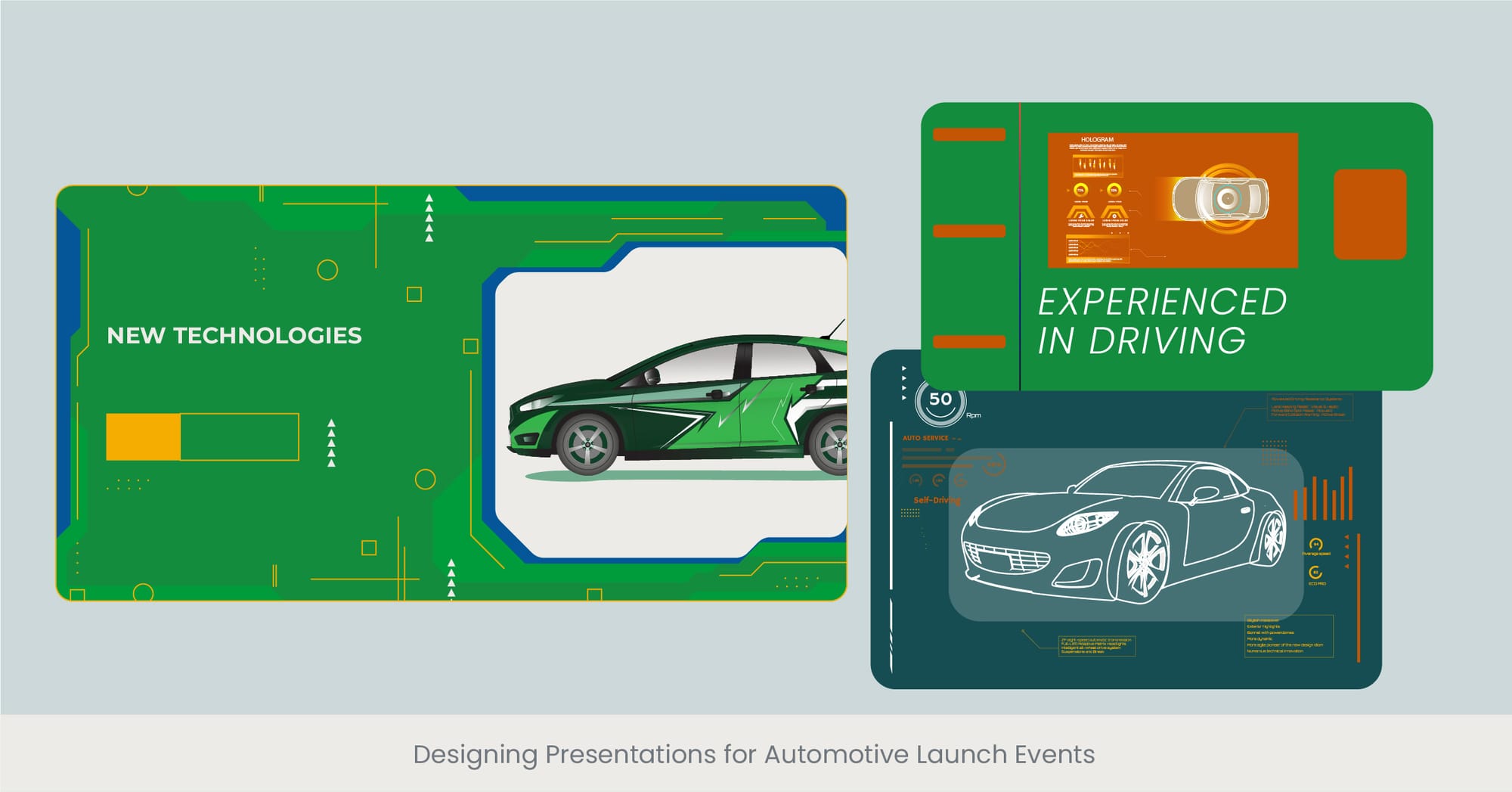
Crafting the Narrative
The cornerstone of any successful automotive launch event is a presentation that tells a compelling story. This isn't just about showcasing a new car; it's about inviting the audience on a journey that illustrates the car's development, its place in the brand's lineage, and its impact on the future of driving. Whether it's the debut of an electric vehicle launch presentation or the unveiling of a luxury sedan, the presentation must weave a narrative that connects with the audience on a personal level, demonstrating how the vehicle addresses their desires, needs, and aspirations. It's about creating a moment where the car becomes more than just a product; it becomes a beacon of innovation and a symbol of what's to come.
Background and Detailed Exploration
To design an impactful presentation, one must delve deep into the essence of the car being introduced. This involves a thorough exploration of its design philosophy, technological advancements, and how it represents a shift towards a new era in automotive design and functionality. For instance, an SUV launch presentation might emphasize ruggedness and versatility, appealing to the adventurous spirit of potential customers, while an electric vehicle launch might focus on sustainability and cutting-edge technology. Understanding the car's unique selling points and how they align with market trends and customer expectations is crucial for developing a presentation that captures the essence of the vehicle and the innovation it brings to the table.
Incorporating Engaging Elements
Modern automotive presentations go beyond traditional slideshows and speeches. They incorporate a variety of engaging elements, from immersive virtual reality experiences that allow attendees to 'drive' the car in a simulated environment, to high-definition video content that showcases the car in action in breathtaking landscapes. The integration of such multimedia content not only captivates the audience but also provides them with a more tangible understanding of the car's capabilities and features. Live demonstrations, interactive sessions, and even augmented reality experiences can further enhance the presentation, making it an unforgettable event that builds excitement and anticipation for the car's launch.
For high-impact events, event showcase presentations help highlight essential aspects of your brand, offering, or innovation. These presentations should balance aesthetics with concise information to leave a lasting impression. This guide will detail how to design event presentations that resonate with diverse audiences, ensuring every slide counts.
Evidence of Success
The effectiveness of these presentation designs is backed by both audience feedback and sales figures post-launch. For example, events that utilized virtual reality to introduce new models have reported higher engagement rates and increased media coverage, translating to a stronger initial interest in the vehicle. Industry analysts often cite the quality of the launch presentation as a critical factor in the early success of a new car, highlighting the correlation between innovative presentation techniques and market performance. Studies and expert opinions further reinforce the importance of a well-designed presentation in creating buzz and driving customer interest in the new vehicle.
Engaging Stakeholders with Compelling Narratives

The Power of Storytelling in Automotive Launches
In the context of automotive innovation and presentation, the narrative crafted around a new vehicle is not just a backdrop but the driving force that engages and connects with the audience. A compelling narrative goes beyond the specifications and features of the car; it encompasses the vision, the journey, and the impact the vehicle aims to have on the market and society. Whether introducing a groundbreaking electric vehicle launch keynote or a luxury car launch presentation, the story told needs to resonate on an emotional level, making stakeholders feel part of something transformative. This engagement is pivotal in turning interest into anticipation and anticipation into action.
Historical Context and Narrative Depth
To create a narrative that truly engages, it's essential to weave in the broader context of the automotive industry's evolution and the specific company's heritage and vision for the future. This involves delving into the genesis of innovations—be it the development of electric vehicles (EVs), hybrid models, or advancements in autonomous driving—and how they align with societal shifts towards sustainability, efficiency, and a new era of mobility. The narrative should highlight how the launch represents not just a new car but a milestone in the ongoing journey of automotive progress.
Real-World Examples of Narrative Engagement
Successful examples abound where compelling narratives have significantly impacted the reception of automotive launches. Take, for instance, the narrative around Tesla's electric vehicle launches, which are framed not just as car launches but as critical steps towards a sustainable future. This powerful narrative has engaged customers, investors, and media alike, creating an ecosystem of anticipation and support that goes beyond the immediate event. Similarly, the introduction of SUVs by traditional luxury car manufacturers, framed as an expansion of the luxury experience into new realms of versatility and performance, showcases how narratives can open up new market segments and redefine brand perceptions.
Narrative Validation through External References
The effectiveness of engaging stakeholders through narratives is not anecdotal; it is backed by research and analysis. Studies in marketing and communication have shown that customers' emotional engagement with a brand's story significantly influences their purchase decisions and loyalty. Further, industry reports on car launches have highlighted the correlation between the strength of the narrative and the media coverage, public interest, and ultimately, the commercial success of the vehicle. References to successful launches, alongside expert commentary and consumer feedback, provide a solid foundation for understanding the impact of well-crafted narratives in automotive presentations.
Virtual Reality Experiences for Car Launches
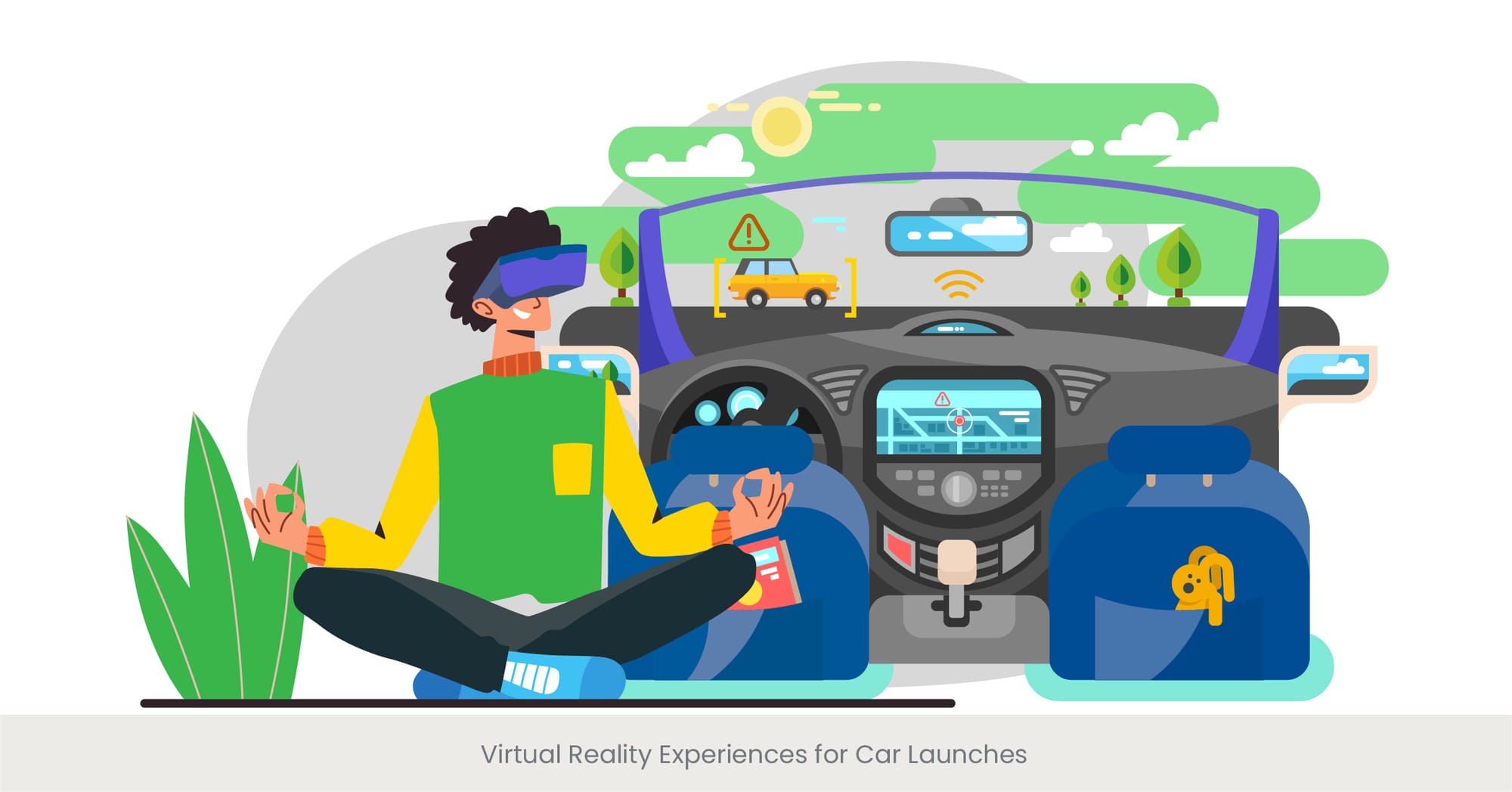
Immersing Audiences in Innovation
The advent of virtual reality technology has opened new frontiers for automotive presentations, allowing manufacturers to immerse their audience directly into the experience of their latest innovations. A virtual reality car launch offers a first-person perspective of the vehicle's capabilities, design, and driving experience without the attendee ever setting foot inside the car. This immersive experience goes beyond visual stimulation, engaging the senses in a manner that traditional presentations cannot, thus creating a lasting impression of the car's features and brand's forward-thinking approach.
The Evolution of Presentation Techniques
The integration of VR into automotive launches marks a significant evolution from conventional presentation techniques. Historically, car launches relied on physical displays and test drives to showcase vehicle features. However, VR allows for an unprecedented level of interaction and engagement, enabling attendees to explore the vehicle in a virtual environment, simulate driving conditions, and even customize the car's features in real-time. This technological leap not only captivates the audience but also conveys the company's commitment to innovation and the future of mobility.
Real-World Applications and Impact
Brands like BMW and Toyota have successfully leveraged VR experiences in their launch events, setting a new standard for engagement and excitement. For example, BMW's electric vehicle launch presentation used VR to showcase the car's interior and driving dynamics, allowing users to experience the quiet, smooth ride of an electric vehicle firsthand. Toyota, on the other hand, used virtual simulations to highlight the off-road capabilities of its SUV models, providing an adrenaline-filled experience that effectively communicated the vehicle's durability and performance. These applications demonstrate VR's potential to transform car launches from mere announcements into dynamic, interactive experiences that leave a lasting impact on the audience.
Supporting Evidence and Industry Perspectives
The effectiveness of VR experiences in automotive presentations is supported by both consumer feedback and industry analysis. Attendees of VR-enabled launch events report a higher level of engagement and a better understanding of the vehicle's features and capabilities. Furthermore, industry experts predict that VR will become an increasingly essential tool in automotive marketing, offering a competitive edge to brands that adopt this technology early. Case studies and reports highlight VR's role in increasing interest and excitement around new launches, suggesting that virtual reality experiences will play a pivotal role in the future of automotive presentations.
Leveraging Multimedia Content for Maximum Impact
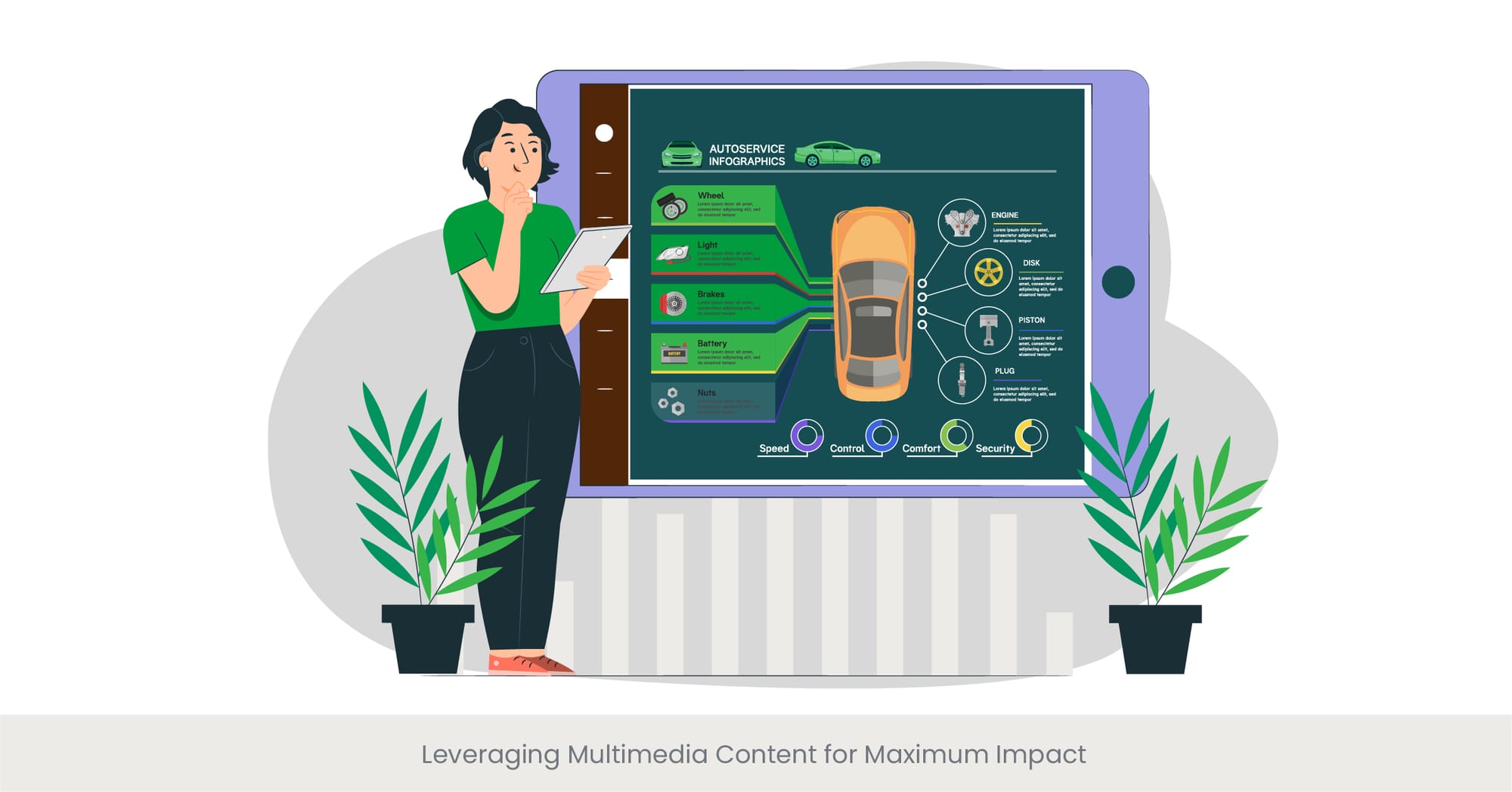
Enriching the Narrative with Diverse Formats
The automotive industry's dynamic nature calls for equally dynamic presentation strategies, where leveraging multimedia content stands out as a key tactic for capturing audience attention and conveying complex information engagingly and effectively. Integrating high-quality videos, animations, and interactive elements into a car launch presentation transforms the traditional reveal into an immersive experience. This strategy not only showcases the car's design and features in stunning detail but also enables brands to weave intricate narratives that resonate with the audience, fostering a deeper connection with the product.
When introducing a new product or service, launch presentation slides play a vital role in capturing attention and driving excitement. These slides should be visually captivating and deliver key messages effectively to engage your audience from the start. In this guide, we'll explore how to create impactful launch presentations.
The Evolution of Automotive Presentations
The shift towards multimedia-rich presentations reflects broader changes in consumer expectations and technological advancements. Gone are the days when static slides and speeches could captivate an audience. Today's car buyers seek dynamic, engaging experiences that allow them to feel connected to the brand and its products. High-definition videos that highlight the car's performance, animations that dissect its innovative features, and virtual tours of its interior are now standard elements of a cutting-edge car launch. This evolution underscores the industry's move towards more interactive, engaging marketing practices that meet the audience's desire for compelling, informative content.
Effective communication during internal meetings is key to project success. Collaborator meeting presentations should foster collaboration, transparency, and alignment among team members. This guide will provide tips on designing meeting presentations that facilitate productive discussions, ensuring everyone is on the same page.
Showcasing Success Through Multimedia
Examples of successful multimedia integration abound in the automotive sector. For instance, the launch of an electric vehicle might feature a video journey through its development process, highlighting key innovations and sustainability efforts. Luxury car presentations often employ visually stunning animations to detail craftsmanship and design philosophy, while SUVs are frequently introduced through high-adrenaline adventure videos that showcase their rugged capabilities. These multimedia elements not only enhance the presentation's appeal but also serve as powerful tools for communicating the vehicle's unique selling points and brand values.
Validation and Industry Perspectives
The impact of multimedia content on the success of car launches is well-documented, with studies indicating that presentations featuring diverse media formats achieve higher engagement and recall rates among audiences. Industry experts emphasize the role of multimedia in differentiating brands in a crowded market, noting that creative, high-quality content can significantly influence consumer perceptions and intent to purchase. References to major automotive launches and marketing campaigns further illustrate the strategic use of multimedia content to create buzz, drive interest, and ultimately, contribute to a successful market introduction.
Organizing Live Demonstrations and Test Drives
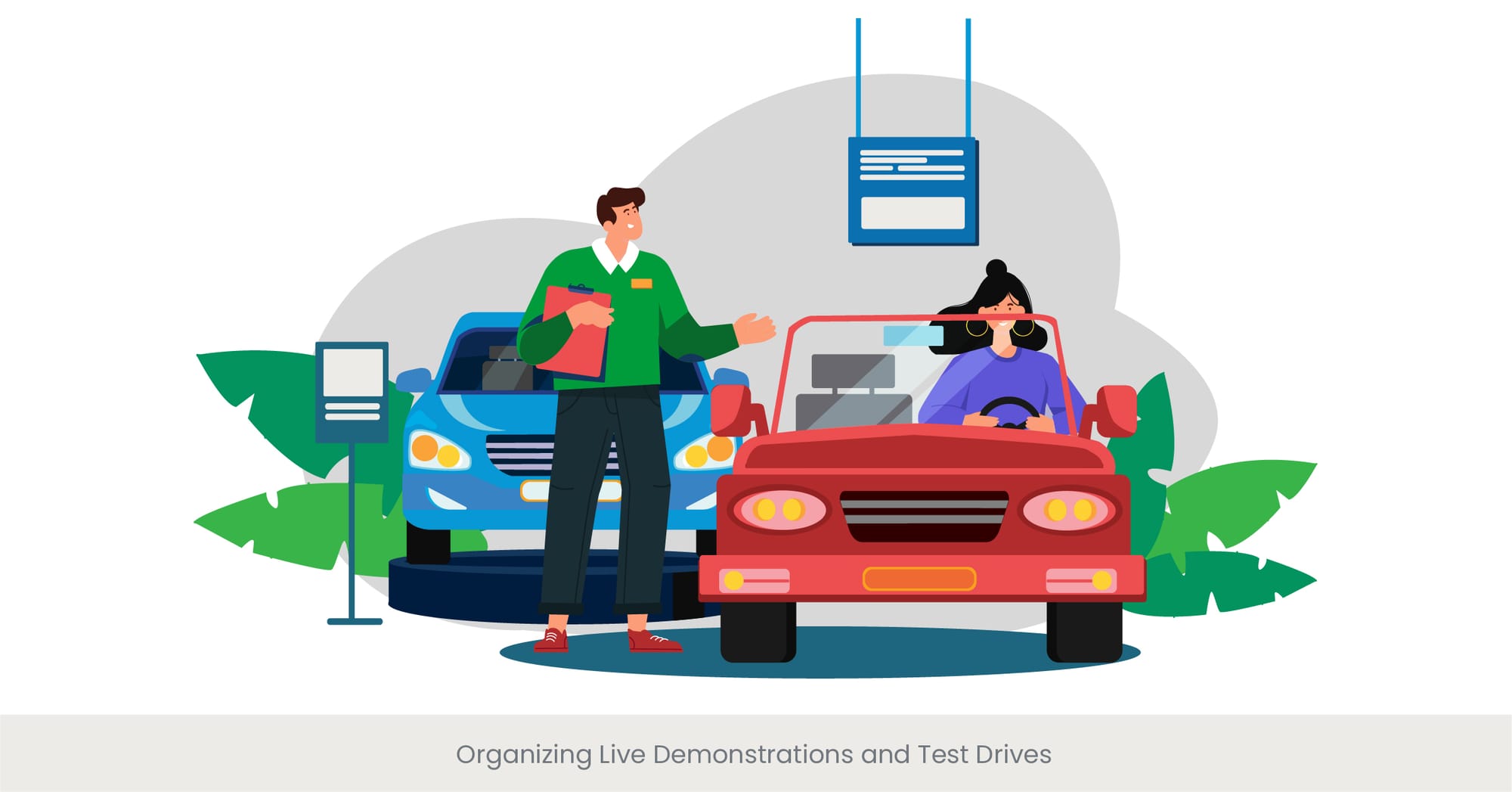
Creating Memorable Experiences Through Direct Interaction
Live demonstrations and test drives are pivotal in transitioning from merely showcasing a vehicle to creating an immersive experience that engages the senses and emotions of potential customers and stakeholders. This hands-on approach allows attendees to experience the vehicle's handling, responsiveness, and innovative features in real-world conditions, offering tangible proof of the vehicle's capabilities and advantages. Whether it's feeling the acceleration of an electric vehicle launch presentation or the comfort and luxury of a new sedan, live experiences create a direct connection between the product and the consumer.
Strategic Planning for Impactful Demonstrations
The organization of live demonstrations and test drives requires meticulous planning, with a focus on safety, logistics, and targeted messaging. It's essential to select environments that highlight the vehicle's strengths—such as a track for performance cars or challenging terrain for SUVs—ensuring that participants can fully appreciate the vehicle's capabilities. Additionally, integrating informative sessions with product experts and interactive elements can enhance the overall experience, providing a comprehensive understanding of the vehicle's features and benefits.
Highlighting Success with Real-World Examples
The impact of well-executed live demonstrations can be seen in numerous successful car launches. For instance, the launch of a new hybrid vehicle might include test drives that showcase its fuel efficiency and reduced emissions, directly addressing consumer concerns about sustainability and cost savings. Similarly, luxury brands often organize exclusive driving experiences that emphasize craftsmanship, performance, and advanced technology, catering to the high expectations of their target audience. These live elements not only validate the manufacturer's claims but also generate excitement and buzz around the new release.
Evidence of Effectiveness
The effectiveness of live demonstrations and test drives is supported by consumer feedback and sales data, which often show a positive correlation between these experiences and increased interest and purchase intent. Surveys conducted post-event reveal that participants are more likely to consider buying the vehicle after a test drive, highlighting the importance of direct experience in the decision-making process. Furthermore, industry analysis underscores the role of live demonstrations in enhancing brand perception and loyalty, contributing to the long-term success of the vehicle and the brand.
Coordinating with Marketing for Unified Messaging
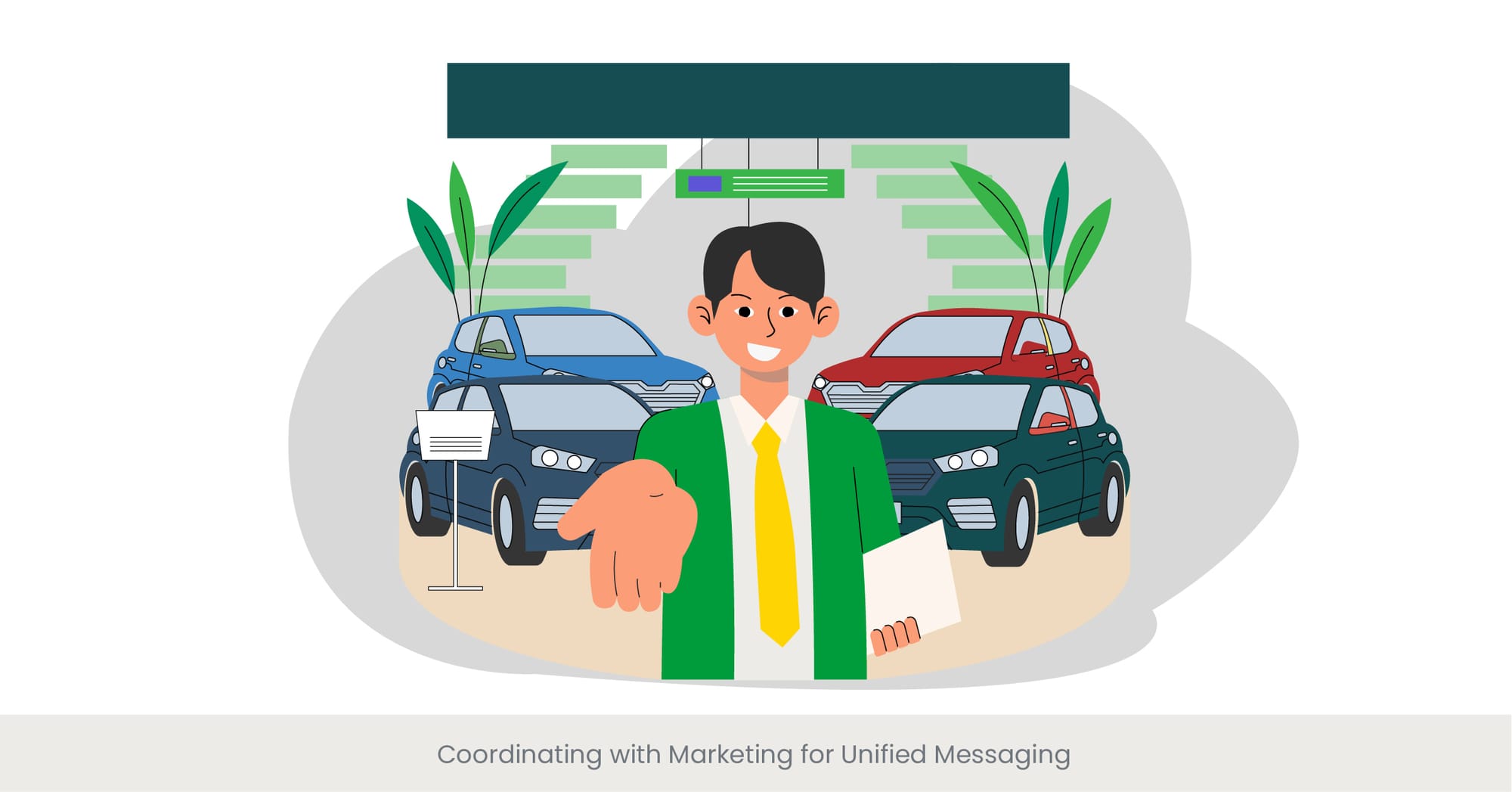
Harmonizing Presentation and Promotion
The success of an automotive launch hinges not just on the event itself but on how effectively the vehicle's messaging is communicated across all marketing channels. Coordinating with marketing teams to develop a unified messaging strategy ensures that the core themes, benefits, and innovations of the new car are consistently highlighted, whether in a luxury car launch keynote, an SUV launch audio visual content, or a hybrid vehicle launch presentation. This alignment strengthens the brand's narrative, making it more compelling and memorable for the audience, and amplifying the reach and impact of the launch.
Strategies for Effective Message Integration
Effective message integration involves a deep understanding of the vehicle's target audience, key selling points, and the overarching brand story. This knowledge forms the foundation of a comprehensive marketing plan that covers everything from traditional advertising campaigns to digital marketing efforts, public relations, and social media engagement. Each element of the campaign should echo the launch event's messaging, creating a seamless experience that resonates with consumers and builds anticipation for the vehicle's release. Special attention should be given to leveraging digital platforms to extend the event's reach, engaging potential customers through interactive content, behind-the-scenes looks, and targeted promotions.
Showcasing Success through Consistency
The effectiveness of unified messaging can be observed in successful car launches that have managed to create a buzz not only at the event but across multiple media platforms. For example, when introducing a new electric vehicle, manufacturers might center their message around innovation, sustainability, and future mobility, themes that are then echoed in every blog post, video, and social media update leading up to and following the launch. This consistency helps to build a strong, recognizable brand image that attracts and retains the interest of potential customers.
Validation and Impact on Market Reception
The impact of a coordinated marketing strategy is evident in the increased brand recognition, engagement rates, and, ultimately, sales conversions. Research indicates that consumers are more likely to trust and engage with brands that present a consistent message across all platforms. Furthermore, marketing experts emphasize the importance of unified messaging in differentiating a vehicle in a competitive market, highlighting its unique selling propositions and fostering a connection with the target audience. Case studies from leading automotive brands demonstrate how a cohesive marketing approach can significantly enhance the effectiveness of a car launch, contributing to the vehicle's success in the market.
Media and Press Relations for Automotive Launches
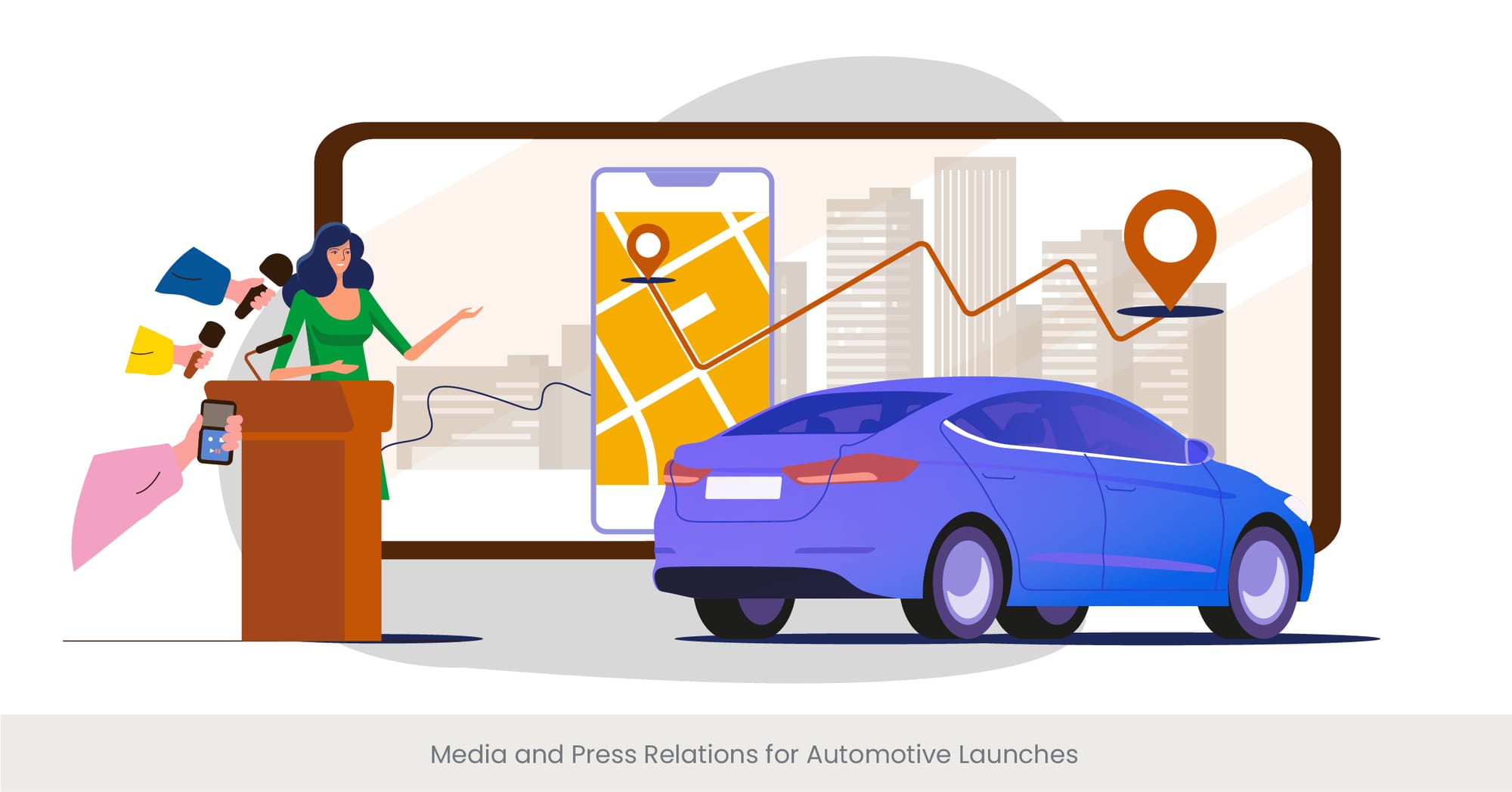
Building the Narrative for Media Engagement
Successful automotive launches rely heavily on the ability of a brand to capture the attention and imagination of the media. Establishing strong press relations involves more than just sending out press releases; it requires the creation of a compelling narrative that resonates with journalists and influencers, encouraging them to share the story with their audiences. Whether it's a revolutionary electric vehicle launch presentation or the unveiling of a luxury car, the story told to the media should highlight the innovation, design, and impact of the new vehicle, positioning it as a significant development in the automotive industry.
Strategies for Engaging with Journalists and Influencers
Engaging effectively with the media involves a multifaceted approach that goes beyond traditional press conferences. Exclusive previews, one-on-one interviews with key executives, and hands-on test drives can offer journalists and influencers unique insights into the vehicle's features and the technology behind it, fostering more detailed and positive coverage. Additionally, providing media kits that include high-quality images, videos, and comprehensive background information can help journalists craft more informed and engaging stories about the car launch.
Highlighting Real-World Success Stories
The impact of well-executed media and press relations can be seen in automotive launches that have garnered widespread attention and acclaim. For example, strategic engagements with auto journalists and leading influencers ahead of a major hybrid vehicle launch have resulted in front-page stories, viral social media content, and extensive coverage in both traditional and digital media outlets. These successes demonstrate the power of effective media relations in creating buzz and excitement around a new vehicle, significantly enhancing its visibility and appeal to potential customers.
Evidence of Effectiveness and Best Practices
The effectiveness of strategic media and press relations is supported by research and case studies that show a direct correlation between the extent and positivity of media coverage and the success of car launches. Automotive marketing experts emphasize the importance of building genuine relationships with the media, tailoring experiences to suit different outlets, and maintaining transparency and accessibility throughout the launch process. These practices not only ensure extensive coverage but also help in managing the narrative around the vehicle, contributing to a successful introduction to the market.
Post-Launch Engagement and Feedback Collection
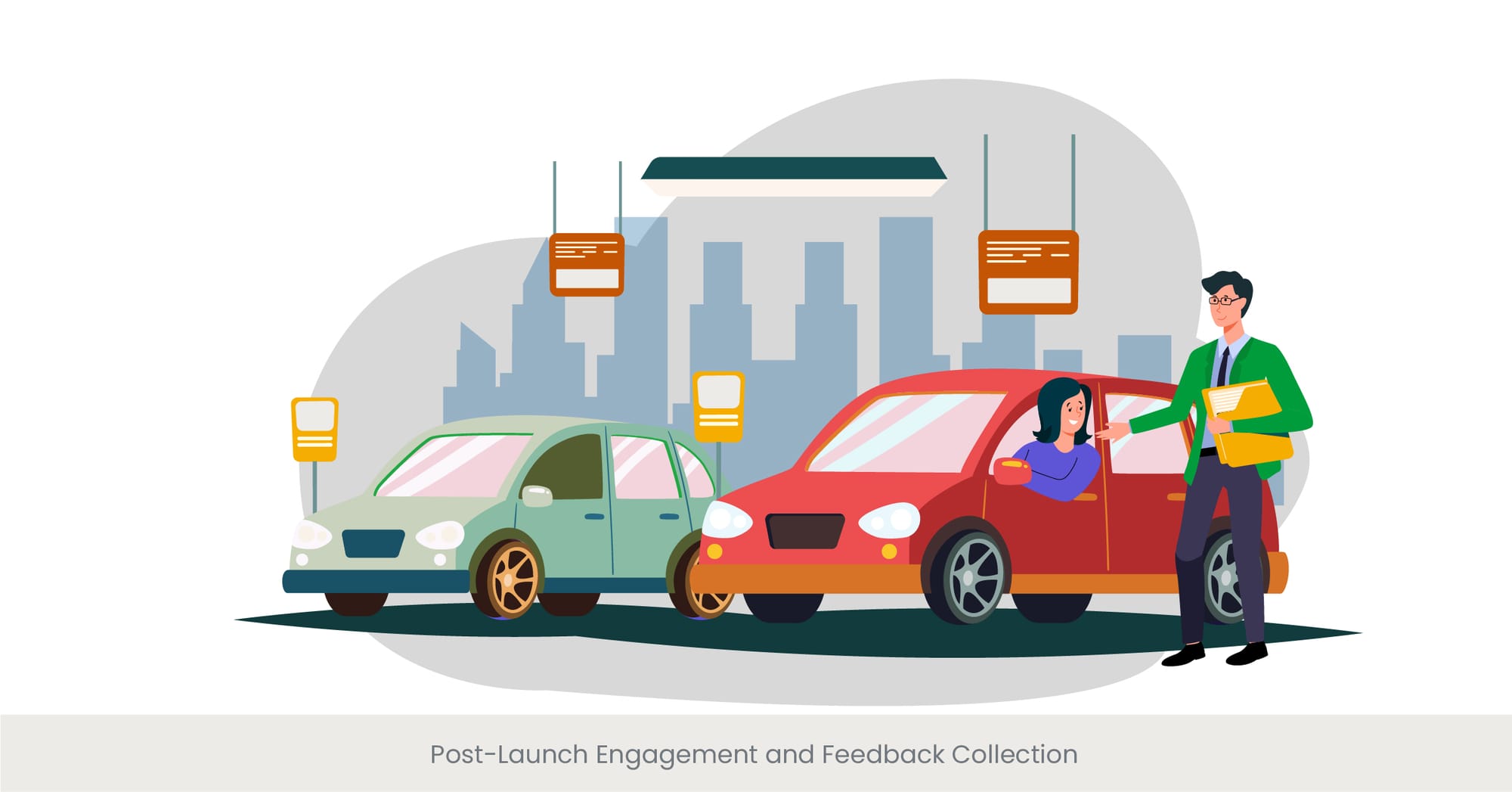
Sustaining Interest Beyond the Launch
The completion of a car launch event marks the beginning of an essential phase in the marketing lifecycle: post-launch engagement. This stage is critical for maintaining the momentum generated by the launch and continuing to build interest and desire for the new vehicle. Effective strategies include ongoing social media campaigns, email marketing to potential customers, and interactive online platforms where enthusiasts and potential buyers can explore the vehicle in greater detail. The goal is to keep the conversation going, encouraging sharing and discussion that keeps the vehicle in the public eye.
Gathering Valuable Consumer Feedback
Post-launch feedback collection is another pillar of this phase, offering invaluable insights into consumer perceptions, experiences, and expectations. This feedback can be gathered through a variety of channels, including online surveys, social media interactions, and direct customer inquiries. By actively listening to and engaging with the audience, manufacturers can identify strengths to highlight in future marketing efforts, as well as areas for improvement in the vehicle itself or in how it is presented to the market.
Real-World Examples of Effective Engagement
Numerous automotive brands have successfully leveraged post-launch engagement to enhance their vehicle's market presence and gather critical feedback. For example, following the launch of a new electric vehicle, one manufacturer implemented a series of interactive webinars featuring their design and engineering team, allowing enthusiasts to ask questions and provide direct feedback. Another brand launched a user-generated content campaign, encouraging new owners to share their experiences on social media, which not only provided authentic, relatable content but also invaluable firsthand feedback on the vehicle's performance and features.
The Impact of Engagement and Feedback on Future Success
The strategic collection and utilization of post-launch feedback have a profound impact on a vehicle's continued success and the brand's future product development. This feedback loop enables manufacturers to refine their offerings and tailor their marketing strategies to better meet consumer needs and expectations. Case studies and industry analyses underscore the importance of active post-launch engagement and feedback collection in driving improvements, enhancing customer satisfaction, and fostering brand loyalty.
Case Studies: Successful Automotive Presentations
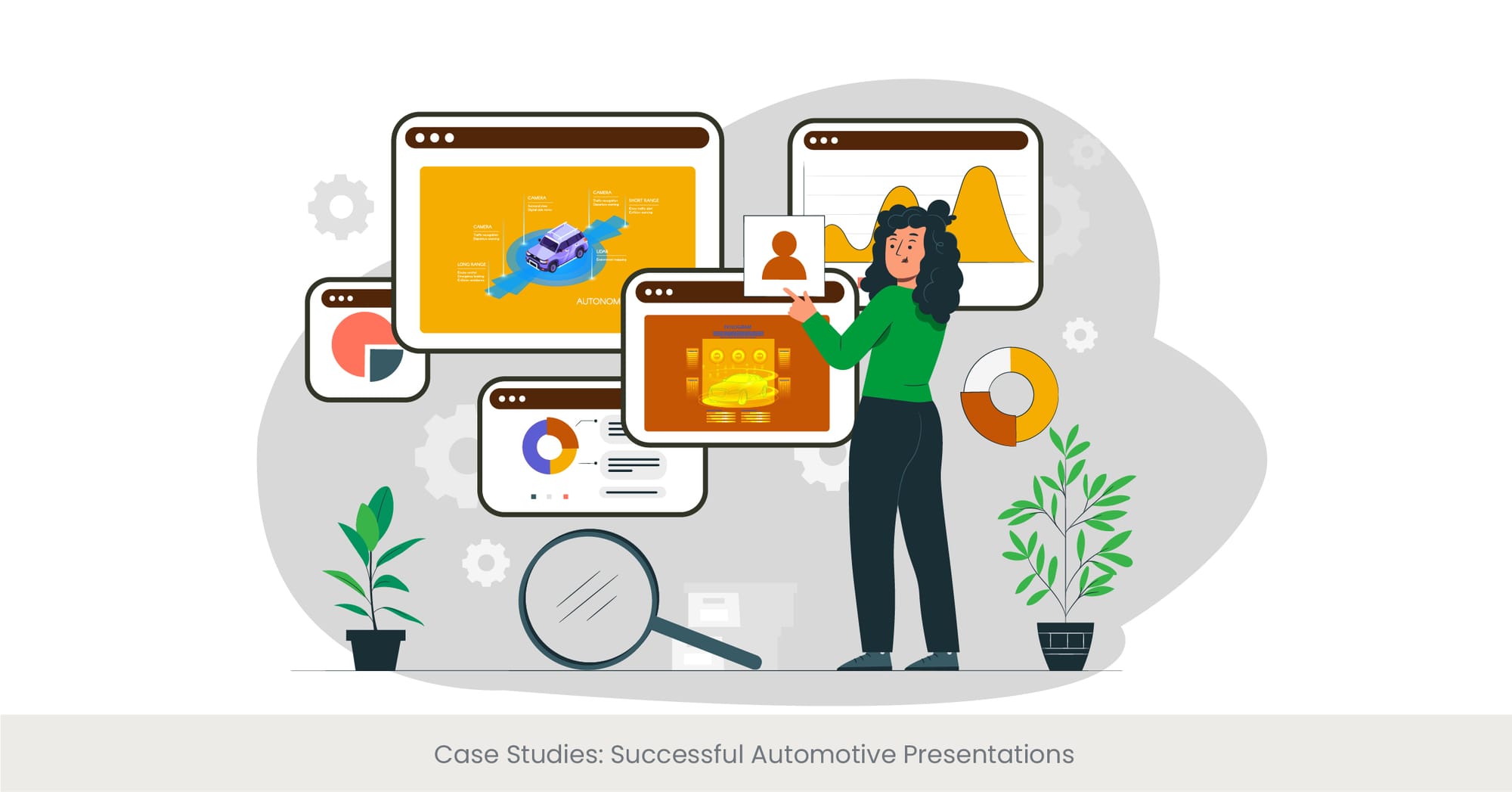
Tesla's Electric Vehicle Launches: A Paradigm of Innovation
Tesla, Inc. has consistently set the benchmark for successful automotive presentations, particularly with its electric vehicle launches. Emphasizing the narrative of innovation and sustainability, Tesla utilizes a combination of engaging storytelling, immersive multimedia content, and charismatic leadership to captivate its audience. The company's ability to convey the importance of electric vehicles in combating climate change, coupled with showcasing cutting-edge technology such as Autopilot, has not only generated significant media coverage but also fostered a strong, loyal customer base. Tesla's launches are textbook examples of how aligning product innovation with compelling narratives can create a powerful brand ethos.
BMW's World Premiere of the i Series: Leveraging Multimedia for Impact
BMW's launch of the i Series electric vehicles exemplifies the effective use of multimedia content to enhance a car launch presentation. By integrating high-definition videos that highlighted the vehicles' futuristic design and sustainability features, along with interactive virtual reality experiences that allowed guests to 'sit' in the cars and 'experience' driving them, BMW set a new standard for engaging automotive presentations. The strategic use of these technologies not only underscored BMW's commitment to innovation and eco-friendliness but also significantly boosted the visibility and appeal of the i Series.
Toyota's Hybrid Launches: Engaging Through Live Demonstrations
Toyota has been at the forefront of hybrid technology, and its launch events for new hybrid models demonstrate the power of live demonstrations and test drives. By allowing attendees to experience the seamless integration of electric and gasoline power firsthand, Toyota effectively communicated the practical benefits and environmental impact of its hybrid vehicles. These hands-on experiences, supported by detailed presentations on the technology behind the hybrids, helped Toyota solidify its position as a leader in sustainable automotive solutions.
The Impact of Strategic Launch Presentations on Brand Success
These case studies underline the importance of strategic planning and execution in automotive presentations. From Tesla's focus on narrative and vision, BMW's use of immersive technologies, to Toyota's emphasis on experiential engagement, each brand leverages its unique strengths to create a launch event that resonates with its audience. The success of these presentations is measured not only in immediate media attention and customer interest but also in long-term brand loyalty and market position.
Frequently Asked Questions (FAQs)
How long until electric cars take over?
Electric cars are projected to become more prevalent in the next two decades, with estimates suggesting that by 2040, they could represent up to 58% of global passenger car sales. The transition's pace depends on advancements in battery technology, charging infrastructure, and governmental policies supporting electric vehicle (EV) adoption.
Who is the father of electric vehicles (EVs)?
While no single individual can claim the title of "father of electric vehicles," Thomas Parker is often credited with building the first practical electric car in 1884 in London. His work laid the foundation for the development of EV technology.
What was the first Toyota electric car?
The first Toyota electric car was the Toyota RAV4 EV, first introduced in 1997. A collaboration with Tesla Motors in 2012 produced a second generation, showcasing Toyota's commitment to electric vehicle technology.
What was the first electric car released in the United States?
The first electric car in the United States is credited to William Morrison in 1890. His six-passenger wagon could reach speeds of up to 14 miles per hour, marking the beginning of electric vehicles in America.
When did hybrid cars come out?
The first mass-produced hybrid car, the Toyota Prius, was released in Japan in 1997 and globally in 2000. It combined a gasoline engine with an electric motor, pioneering the hybrid vehicle market.
What is the downside of a hybrid car?
Hybrid cars can have higher upfront costs, complex technology leading to potentially higher maintenance costs, and, in some cases, less trunk space due to the battery's placement.
What is the introduction of hybrid electric vehicles?
Hybrid electric vehicles (HEVs) combine an internal combustion engine with one or more electric motors, using energy stored in batteries not plugged into an external source. They were introduced to combine the benefits of gasoline engines and electric motors, improving fuel efficiency and reducing emissions.
What's the future of hybrid cars?
The future of hybrid cars remains strong as a transitional technology towards fully electric vehicles. They serve as a practical choice for consumers not ready to switch to full EVs, offering better fuel efficiency and lower emissions than traditional gasoline vehicles.
Is Apple Car delayed to 2028?
As of my last update, there were rumors about delays in the Apple Car project, but no official confirmation from Apple regarding a specific launch date. The Apple Car project, known as Project Titan, has been subject to speculation regarding its development timeline.
Is Apple Project Titan canceled?
Apple has not officially announced the cancellation of Project Titan, its autonomous vehicle project. Despite various rumors and leadership changes, Apple continues to invest in autonomous technology and vehicle design.
How much is the Apple Car gonna cost?
Apple has not released any information regarding the pricing of the Apple Car. Given Apple's positioning in the technology market, it's speculated that their vehicle could be positioned as a premium product.
Is Apple releasing a car?
Apple is reportedly working on an autonomous vehicle project known as Project Titan. However, details regarding the release date, features, and specifics of the Apple Car remain speculative, with no official confirmation from Apple.
What does SUV mean in motoring?
SUV stands for Sport Utility Vehicle. It refers to a vehicle that combines elements of road-going passenger cars with features from off-road vehicles like raised ground clearance and four-wheel drive.

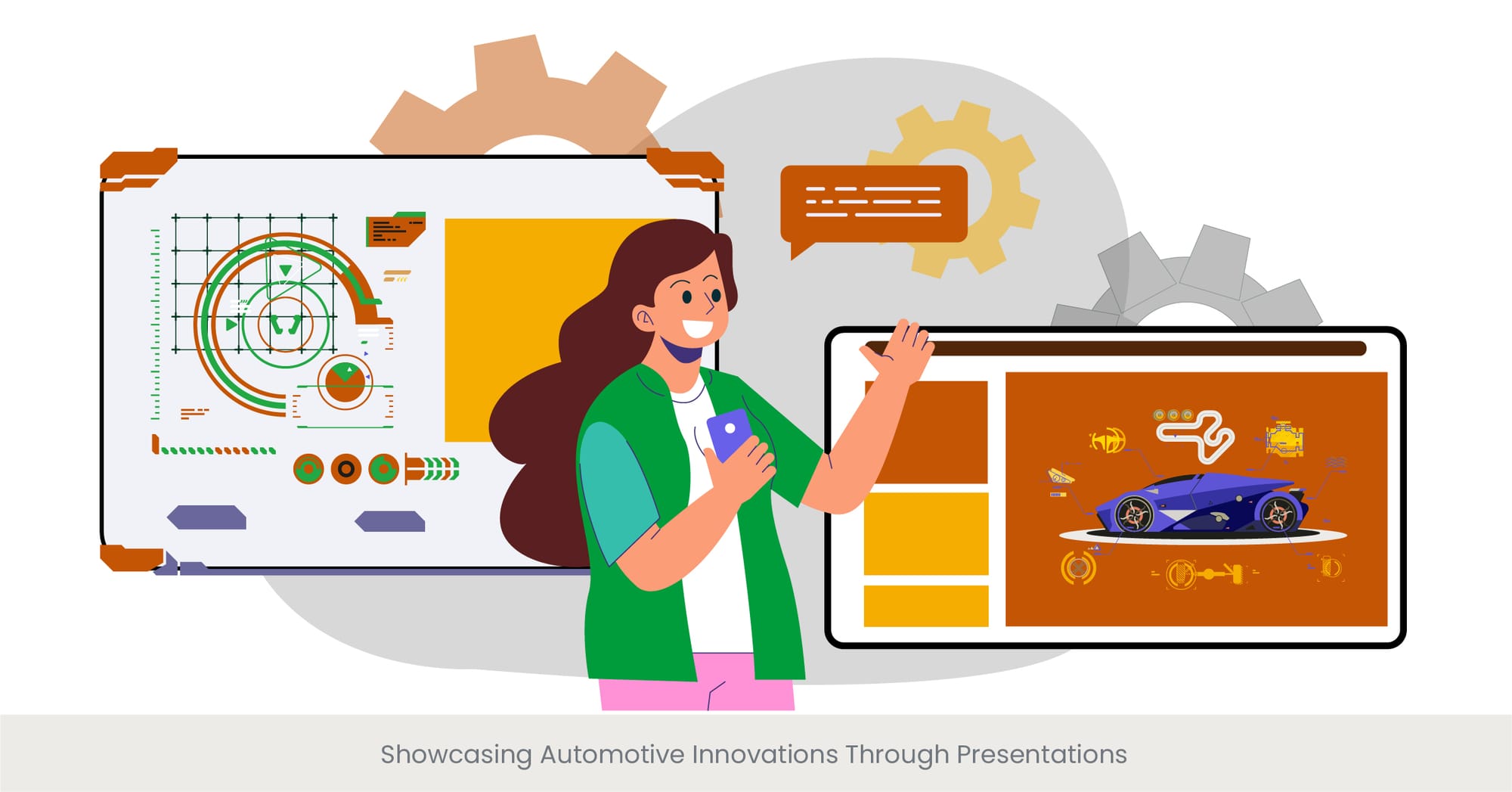

%20(1).jpg)
%20(1).jpg)


